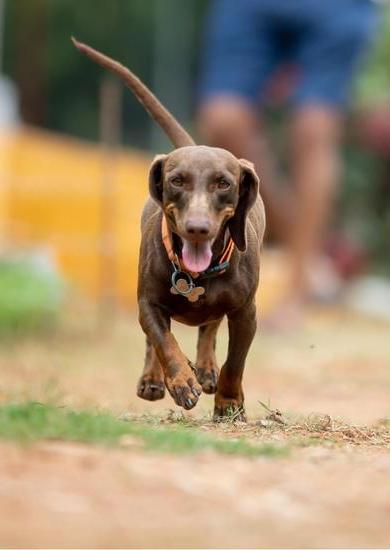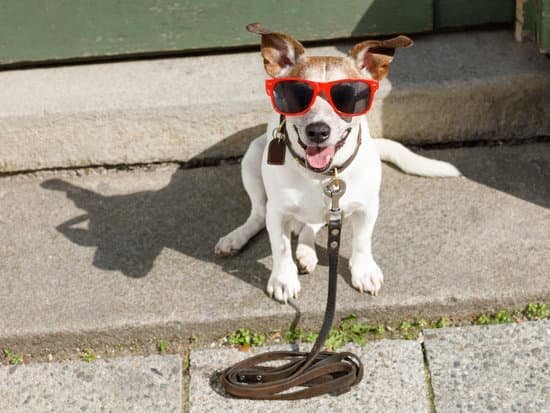Training your dog to heel close to you is an essential skill that can make walks and outings with your furry friend much more enjoyable. Whether you have a new puppy or an older dog, teaching them to walk calmly by your side can prevent pulling, lunging, and other undesirable behaviors.
In this article, we will explore the importance of training your dog to heel and provide you with valuable tips and techniques to help you achieve success in this area.
When it comes to training your dog to heel, patience and consistency are key. By understanding the fundamentals of heel training and implementing the right strategies, you can strengthen the bond with your dog and ensure both of you have a positive experience on walks. From choosing the appropriate equipment to addressing common challenges, we will guide you through each step of the training process.
As part of this comprehensive guide, we will discuss how to use positive reinforcement effectively as a way to reward your dog for heeling correctly. We will also delve into advanced heel training techniques for those who want to take their dog’s obedience skills to the next level.
Ultimately, our goal is for you and your dog to enjoy a harmonious relationship while out and about together. So let’s dive into the world of heel training and discover the many benefits it can bring.
Getting Started
When starting the process of training your dog to heel close to you, choosing the right equipment is essential for setting the stage for success. The most important piece of equipment for heel training is a well-fitting collar or harness. A standard flat collar or a front-clip harness are both suitable options for heel training, as they provide control without causing discomfort to your dog.
In addition to a collar or harness, a sturdy leash is also an essential tool for heel training. A leash that is about six feet long will give you enough control over your dog while still allowing them some freedom of movement. It’s important to avoid using retractable leashes during heel training, as they do not provide consistent control and can allow your dog too much freedom to roam.
Finally, choosing the right treats for positive reinforcement is crucial in the early stages of heel training. Selecting small, soft treats that are highly motivating for your dog will help keep their focus during training sessions and reinforce good behavior. The treats should be easy to chew and swallow quickly so that the momentum of the training session isn’t interrupted by excessive chewing or difficulty swallowing.
By selecting the appropriate equipment for heel training, you will set yourself and your dog up for success from the very beginning. This foundation will make it easier for you and your dog to progress through the rest of the training process and achieve success in mastering the heel command.
The Basics
Teaching your dog to understand the heel command is an essential part of training for any dog owner. It not only ensures safety during walks, but also establishes a strong line of communication between you and your furry friend. Here are some basic steps to follow when teaching your dog to heel:
- Start with the right equipment: Before beginning heel training, make sure you have the proper equipment such as a sturdy leash and a well-fitted collar or harness.
- Choose a consistent command: Select a word or phrase that will be used exclusively for the heel command, such as “heel” or “close.”
- Practice in a quiet environment: Begin training in a low-distraction area where your dog can focus on learning without too many external stimuli.
Once you have everything prepared, it’s time to start teaching your dog the meaning of the heel command. It’s important to remember that patience and consistency are key during this process. Here are further steps to help guide you through this training:
- Positioning: Start by standing with your dog on your left side with their shoulder aligned with your leg.
- Begin walking: Use the chosen command and take a step while gently guiding your dog into position next to you.
- Reward and repeat: When your dog successfully walks beside you in the correct position, be sure to reward them with praise or small treats. Repeat these steps often to reinforce the behavior.
By following these basic guidelines, you can effectively teach your dog to understand and respond to the heel command, setting a solid foundation for future training and strengthening the bond between you and your pet.
Patience and Persistence
When it comes to training your dog to heel close to you, patience and persistence are crucial elements for success. Heel training can be challenging for both you and your dog, but with the right mindset and approach, it’s definitely achievable.
Consistency Is Key
One of the most important aspects of successful heel training is consistency. Dogs thrive on routine and predictability, so it’s crucial to be consistent with your commands, expectations, and rewards. Whether you’re using verbal cues, hand signals, or a combination of both, make sure that you are always delivering the same message to your dog.
Start Slowly and Progress Gradually
Remember that learning to heel closely beside you is a new skill for your dog, so it’s important to start slowly and progress gradually. Begin by practicing in a quiet, distraction-free environment before gradually introducing more challenging settings. Start with short training sessions and gradually increase the duration as your dog becomes more comfortable with the heel command.
Stay Positive and Encouraging
It’s essential to maintain a positive and encouraging attitude throughout the heel training process. Dogs respond well to praise and encouragement, so be sure to celebrate small victories along the way.
Avoid getting frustrated or discouraged if progress seems slow – every dog learns at their own pace, and consistency will eventually pay off. Keep the training sessions fun and engaging for your dog, incorporating plenty of praise, treats, and playtime as rewards for their efforts in learning to heel close to you.
Using Positive Reinforcement
Training your dog to heel close to you is an important skill that requires consistency, patience, and the use of positive reinforcement. When teaching your dog to heel, it’s essential to reward them for following the command correctly. Here are some tips on using positive reinforcement to encourage your dog to heel:
- Use treats: One of the most effective ways to reward your dog for heeling correctly is by offering them a tasty treat as soon as they get into position. Make sure to use high-value treats that your dog finds irresistible, such as small pieces of cooked chicken or cheese.
- Praise and affection: In addition to treats, lavish your dog with praise and affection when they heel properly. Use a happy tone of voice and lots of petting to let them know that they’ve done a good job.
- Clicker training: Consider using a clicker as a marker for good behavior during heel training. Whenever your dog moves into the correct position, immediately click the clicker and then give them a treat. This helps to create a strong association between the desired behavior and the reward.
It’s important to be consistent with your rewards when training your dog to heel. Every time they respond correctly to the heel command, make sure they receive praise and/or a treat. Over time, this consistent positive reinforcement will help solidify the behavior and make heeling close to you second nature for your furry friend.
Remember that every dog is different, so it’s essential to pay attention to what motivates your particular pup. Some dogs may be more food-motivated, while others respond better to verbal praise or playtime with their favorite toy. By understanding what motivates your dog, you can tailor your positive reinforcement techniques for maximum effect in heel training.
Common Challenges
When training your dog to heel close to you, one of the common challenges you may encounter is overcoming distractions and maintaining focus. Dogs are naturally curious and easily distracted, especially when they are outside in a stimulating environment. It’s important to be patient and understanding as you work through these challenges with your dog.
One effective technique for overcoming distractions during heel training is to start in a quiet, familiar environment before gradually introducing more distractions. Begin by practicing the heel command in your home or backyard where there are minimal external stimuli. Once your dog has mastered heeling in these controlled settings, gradually introduce new environments with increasing levels of distraction, such as a park or busy street.
Maintaining focus during heel training also requires consistency and positive reinforcement. Keep your training sessions short and enjoyable for your dog, using treats or verbal praise to reward correct heeling behavior. By consistently reinforcing the desired behavior, you can help your dog understand that staying focused on you while walking is rewarding.
Additionally, using a consistent tone of voice and body language will help convey your expectations to your furry friend. Remember that every dog learns at their own pace, so be patient and persistent as you work through these common challenges in heel training.
Taking It to the Next Level
Once your dog has mastered the basics of heel training, you may want to take their training to the next level by introducing some advanced techniques. These advanced techniques can help to further solidify your dog’s understanding of the heel command and improve their focus and responsiveness during walks.
One advanced technique is incorporating changes in pace and direction while maintaining the heel position. This can be achieved by practicing sudden stops, starts, and turns while keeping your dog close to your side. By doing so, you can teach your dog to pay closer attention to your movements and stay in tune with your pace, ultimately reinforcing their ability to maintain the correct heel position regardless of your walking speed or direction.
Another advanced heel training technique involves adding distractions into the training sessions. This can include having other people or dogs present during practice, as well as introducing various environmental stimuli such as noises or unfamiliar objects. By teaching your dog to remain focused on you and maintain the heel position despite these distractions, you can significantly improve their overall obedience and reliability during walks.
In addition, using verbal cues or hand signals in combination with the heel command can also be considered an advanced technique. By associating specific cues with the heel position, you can enhance communication with your dog and reinforce their understanding of where they should be in relation to you while walking.
Ultimately, incorporating these advanced techniques into your dog’s heel training regimen can result in a well-behaved and attentive walking companion that consistently heels closely to you in a variety of real-world situations.
| Advanced Technique | Impact |
|---|---|
| Pace and direction changes | Improved responsiveness and focus |
| Introducing distractions | Enhanced obedience and reliability |
| Verbal cues/hand signals | Enhanced communication and reinforcement |
Troubleshooting
Training your dog to heel close to you can be a challenging task, and it’s common to encounter issues or setbacks along the way. One common issue is when your dog consistently pulls on the leash instead of walking calmly by your side.
To address this, you can try using a front-clip harness or head halter to discourage pulling. These tools can help redirect your dog’s attention back to you, making it easier to reinforce the heel command.
Another common setback in heel training is when your dog becomes easily distracted, especially when there are other dogs, people, or exciting stimuli around. In these situations, it’s important to remain patient and consistent with your commands.
You can also use high-value treats or toys to keep your dog focused on you during walks and practice sessions. Additionally, gradually increasing the level of distractions in your training sessions can help improve your dog’s ability to maintain focus while heeling.
It’s also important to remember that every dog is unique, and what works for one may not work for another. If you’re experiencing persistent issues or setbacks in heel training despite trying various methods, seeking advice from a professional trainer may be beneficial. They can assess your specific situation and provide personalized guidance tailored to your dog’s needs.
| Common Issue | Solution |
|---|---|
| Pulling on the leash | Using a front-clip harness or head halter |
| Becoming easily distracted | Remain patient and consistent; use high-value treats or toys |
| Persistent issues | Seek advice from a professional trainer |
The Benefits of Heel Training
In conclusion, training your dog to heel close to you can have numerous benefits for both you and your furry companion. By establishing clear communication and leadership through heel training, you can strengthen the bond with your dog and enhance the overall walking experience. This not only improves obedience but also builds trust between you and your pet.
Additionally, heel training provides mental stimulation for your dog, as they must focus on following commands and maintaining the proper position while walking. This can help prevent boredom and destructive behavior resulting from pent-up energy. Furthermore, by mastering heel training, you can both enjoy more relaxing walks without constant pulling or tugging on the leash, making it a more pleasant experience for both of you.
Ultimately, investing time and effort into heel training can lead to a happier and more harmonious relationship with your dog. Through patience, persistence, and positive reinforcement, you can achieve success in heel training, leading to a stronger sense of teamwork between you and your beloved pet. So, take the time to implement these techniques and enjoy the benefits of a well-trained dog by your side during walks.
Frequently Asked Questions
How Do You Teach a Dog to Heel Next to You?
Teaching a dog to heel next to you involves using positive reinforcement techniques such as treats and praise to encourage the desired behavior. Start by holding a treat in your hand and keeping it close to your leg as you walk, rewarding your dog when they stay in the correct position.
Consistent practice and patience are key, gradually reducing the frequency of treats as your dog becomes more reliable at heeling.
How Do I Get My Dog to Walk Closer to Me?
Getting your dog to walk closer to you can be achieved through similar positive reinforcement methods. Start by using a shorter leash to keep your dog closer to your side, rewarding them with treats and praise for walking in the desired position.
Use verbal cues such as “heel” or “close” consistently during training sessions, gradually transitioning away from treats as your dog learns to walk closer to you naturally.
How Do You Train a Dog to Walk Beside You Without Pulling?
Training a dog to walk beside you without pulling requires patience and consistency. When your dog starts pulling on the leash, stop walking and wait for them to relax the tension before continuing.
Use treats and praise to reward your dog for walking without pulling, maintaining a consistent pace and direction during walks. Additionally, using a front-clip harness can also discourage pulling by redirecting your dog’s attention back towards you when they start tugging on the leash.

Welcome to the blog! I am a professional dog trainer and have been working with dogs for many years. In this blog, I will be discussing various topics related to dog training, including tips, tricks, and advice. I hope you find this information helpful and informative. Thanks for reading!





